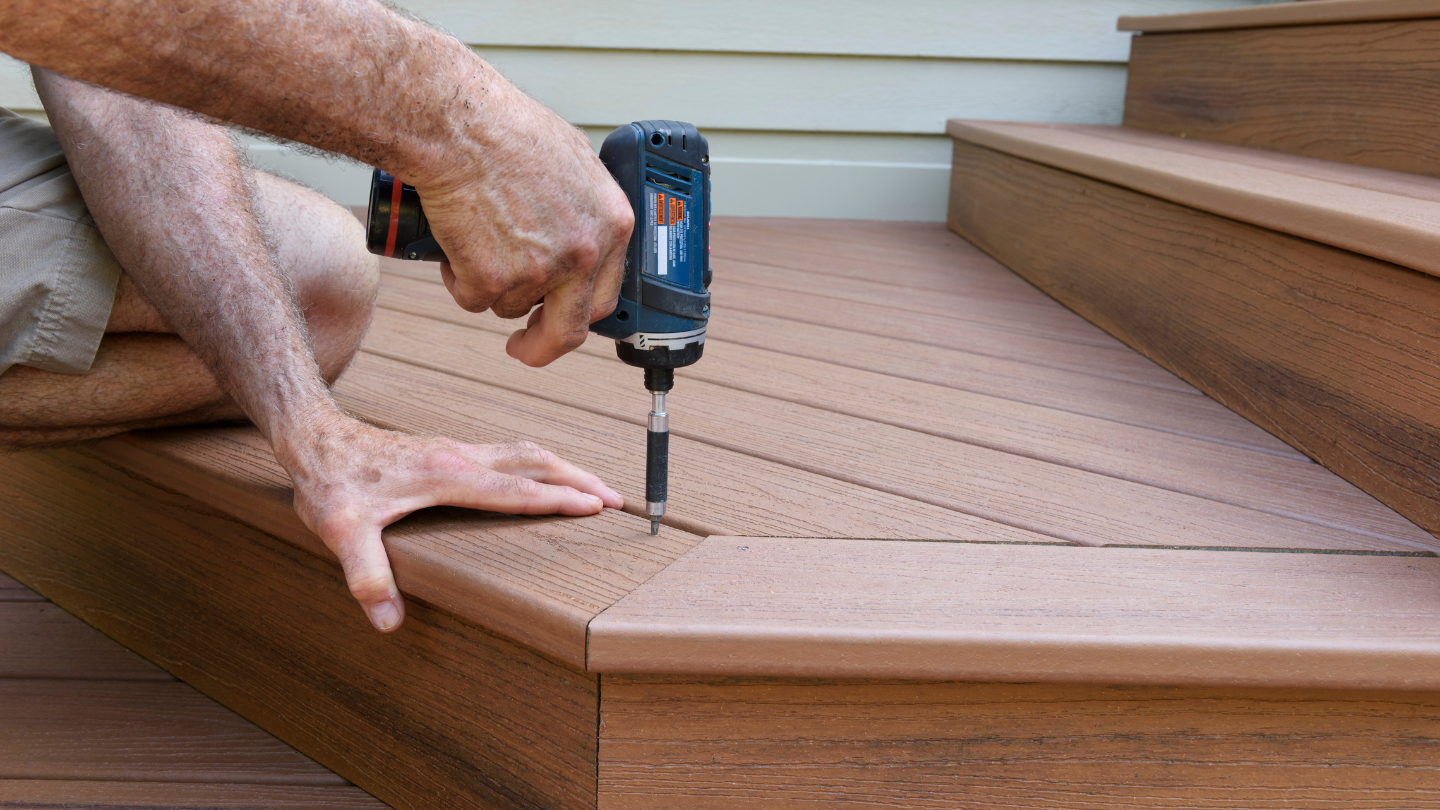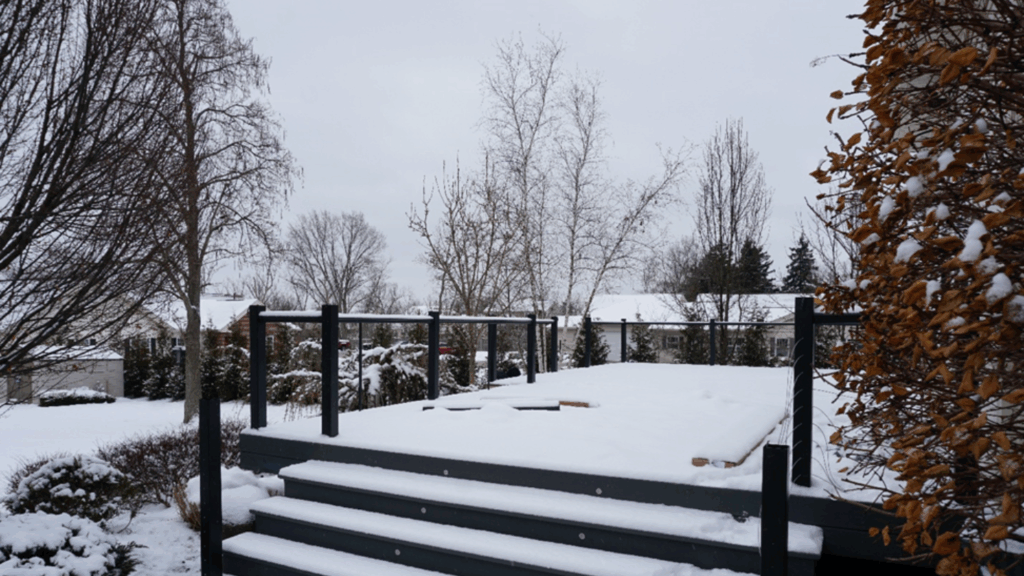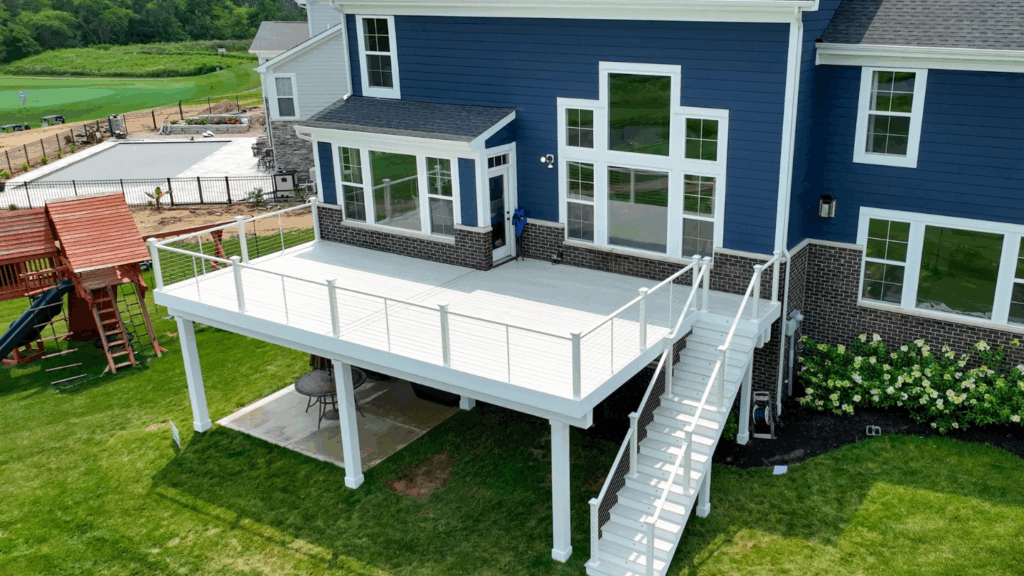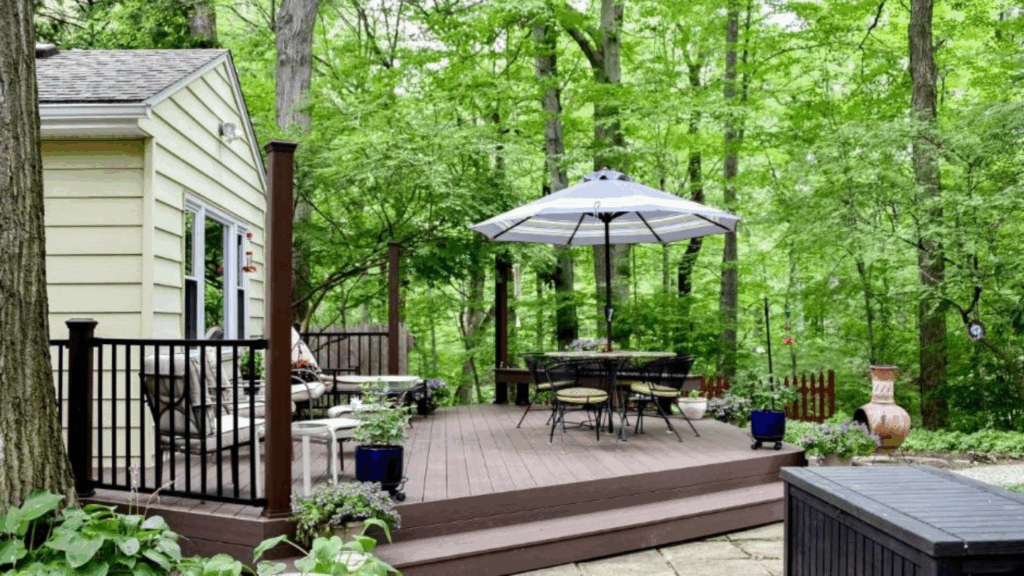When planning a new deck or upgrading an existing one, one key design detail often gets overlooked — deck board thickness. For composite and PVC decks, thickness isn’t just a measurement; it’s a crucial factor that determines strength, performance, and the overall look of your outdoor space.
Most homeowners today choose 1-inch-thick composite or PVC decking for its durability, lightweight design, and refined appearance. Understanding how board thickness impacts your deck’s longevity and comfort can help you make the best decision for your home.
What Is the Standard Thickness for Composite Decking?
Modern composite and PVC deck boards are typically 1 inch thick (commonly referred to as 5/4 decking). This has become the industry standard for residential applications because it provides the ideal balance of strength and flexibility.
Unlike traditional wood, composite decking materials are engineered for consistent density and strength, allowing them to perform exceptionally well at this thickness. High-quality brands, like Trex® or TimberTech®, design their boards to maintain structural integrity even with thinner profiles — meaning you get the same strength as a 2” wood board, but with a sleeker, more modern design.
Why Thickness Matters for Composite and PVC Decking
The thickness of your deck boards directly impacts the stability, feel, and long-term performance of your deck.
- Strength and Stability: 1″ composite or PVC boards can easily support standard residential loads when installed on properly spaced joists (usually 16” on center).
- Comfort Underfoot: Composite materials have minimal flex, providing a solid, secure feel when walking across your deck.
- Visual Appeal: The uniform thickness gives your deck a clean, modern profile that aligns perfectly with contemporary outdoor living spaces.
- Longevity: Thicker, denser composites resist warping, cracking, and moisture damage, ensuring your deck looks new for decades.
With composite or PVC decking, you get superior strength and performance without the need for thicker, heavier boards that natural wood requires.
The Role of Joist Spacing
Joist spacing and board thickness work hand-in-hand to create a structurally sound deck.
For most 1″ composite or PVC deck boards, the recommended joist spacing is:
- 16 inches on center for standard decking installations
- 12 inches on center for diagonal or angled deck board patterns
If your joists are spaced wider than 16 inches, you may need to tighten that spacing or use a thicker, reinforced composite board to maintain rigidity.
Following manufacturer guidelines ensures your deck maintains consistent support, minimizes bounce, and prevents long-term deflection.
Composite and PVC Decking Advantages
Composite and PVC decking materials have redefined what’s possible for outdoor spaces. At around 1 inch thick, these advanced materials outperform wood in virtually every category:
- Low Maintenance: No sanding, staining, or sealing required — just occasional cleaning.
- Moisture Resistance: PVC and composite boards won’t rot, warp, or splinter like traditional wood.
- Fade & Stain Protection: Built-in color protection keeps your deck vibrant for years.
- Lightweight Strength: Engineered cores allow 1″ boards to maintain stiffness and stability with less weight.
- Eco-Friendly Options: Many brands use recycled materials and sustainable manufacturing practices.
The result? A long-lasting deck that maintains its beauty and structure with minimal upkeep — perfect for busy homeowners who want more time enjoying their space, not maintaining it.
How to Choose the Right Thickness for Your Deck
Selecting the ideal thickness for your deck comes down to a few practical considerations:
- Joist spacing and deck layout
- Weight requirements and traffic levels
- Material type (composite or PVC brand)
- Climate and exposure
- Desired design style
For most residential builds, a 1-inch composite or PVC board provides optimal performance and aesthetics. It delivers the clean lines, lasting strength, and minimal maintenance that modern outdoor living demands.
Durability and Longevity
Composite and PVC decks are built to last — and thickness plays a major role. Engineered from durable polymers and recycled materials, these boards:
- Resist mold, mildew, and moisture damage
- Retain color and shape even under intense sun exposure
- Require minimal maintenance to keep looking new
- Offer warranties often spanning 25 years or more
Proper installation with correct joist spacing ensures your deck remains structurally sound and beautiful year after year.
Why Work with a Professional Deck Builder
Choosing the right deck board thickness and material isn’t guesswork — it’s a balance of engineering and design expertise. Professional deck builders understand how joist spacing, fastener systems, and board profiles interact to create a deck that’s safe, durable, and visually flawless.
Partnering with a certified TrexPro® or TimberTech® installer ensures your deck:
- Meets all local building codes
- Maximizes manufacturer warranties
- Performs at its best for decades
Professionals also help you choose complementary elements like lighting, railings, and fascia for a complete, cohesive outdoor space.
Conclusion
When it comes to deck board thickness, today’s 1-inch composite and PVC decking offers the perfect combination of strength, beauty, and low maintenance. Thicker isn’t always better — modern engineered materials deliver exceptional performance in a slim, refined profile.
If you’re ready to design a deck that’s built to last, partner with Woodland Deck Company, your trusted composite and PVC deck builder in Westerville. From premium materials and expert installation to timeless design, we’ll help you create an outdoor living space you’ll love for years to come.
Contact Woodland Deck Company today to start planning your next outdoor project.






